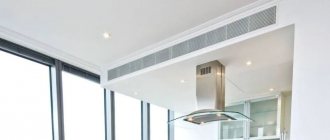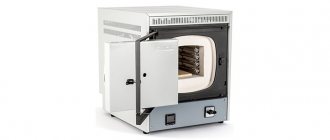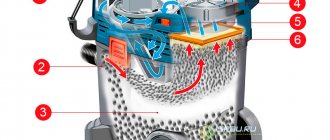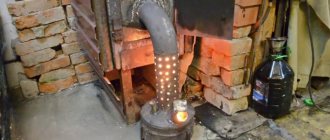With the onset of cold weather, I want to create comfortable conditions at home so that time spent with my family fills my heart with joy and pleasant memories. Central heating operates either at a low heating rate or intermittently.
Simple devices come to the rescue - electric convectors. Before choosing, you should familiarize yourself with the existing types, features and conditions of use for effective operation.
Types of convectors
Electric convectors are available in two types.
• Floor-standing devices are mobile. They can be easily moved from room to room or taken to the country for the weekend. This is facilitated by its low weight and small dimensions, which easily fit in a car.
• Wall-mounted structures require mounting on the wall. More often, such convectors are used to create a barrier against cold flow coming from the side of a window or doorway. Therefore, they are installed in places where radiators are usually located.
A type of wall heaters are built-in models - warm baseboards. Modules of certain sizes are produced, which when connected form a closed circuit. The baseboard is complemented by a temperature regulator and sensor. Installation is simple, but still requires an electrician to properly connect the circuit. With the help of a warm border you can fully heat the room. The only downside is energy costs.
How it works?
An electric convector creates air circulation in the room, warming it up.
Regardless of the model or type, the operating principle of an electric convector is as follows: a flow of cold air is heated by passing through a hot surface (usually a heating element). The warm air flow rises, and when it cools, the air falls and goes through a new cycle .
Where to install
The convector is silent in operation, maintains precise temperature, does not burn or dry out the air, so it is excellent for home use. Since the device is afraid of drafts and rooms with poor insulation, the optimal solution is a bedroom, children's or guest room. Here the heater will provide a smooth temperature increase and maintain it for a long time in an economical mode. We do not recommend installing this equipment in warehouses, summer houses, garages, where there are drafts, uninsulated walls and windows that make the operation of the convector pointless .
Please note that for uniform temperature distribution and comfortable thermoregulation, it is important to choose the right installation location. Most often, convectors are mounted under a window, which allows them to neutralize the flow of cold air. For rooms with high ceilings, additional ceiling fans are used.
Advantages of convectors
— instant heating of the room;
— no difficulties during installation;
- no maintenance required other than regular dust removal;
— does not dry out the air;
— it is possible to set a certain temperature regime;
— from a wide range you can choose a model that is suitable for power;
— safety during operation (maximum heating rate is within +60°C).
It is worth noting that electric heaters have disadvantages, which should also be taken into account when purchasing:
— additional electricity consumption;
— the limited length of the wire requires close proximity to the outlet.
If the issue with the socket is solved with the help of extension cords, then the electricity consumption should be pre-calculated in order to estimate the additional costs.
Reviews of popular models with a power of 2 kW
The modern market offers a huge number of convectors with a mechanical thermostat. The best models are presented with all the necessary functionality: double insulation of live parts, overheating protection, power selection and electricity saving. Let's look at some models.
ENSTO EPHBM20P
The electric convector with a mechanical thermostat 2000 W has dimensions of 152.3 x 38.9 x 8.5 cm. The temperature can be adjusted using a mechanical thermostat. The installation of the device is universal: both floor and wall. Weight approximately 8.6 kg. The device has additional options: frost protection, overheat shutdown. The disadvantages include uneven heat distribution over the housing area.
Convector ENSTO EPHBM20P
Noirot CNX-2 2000
The convector with a mechanical thermostat is of high quality. The French company Noirot is the largest manufacturer of heating equipment. The heating area of the device is 25 square meters with a power of 2 kW. The body is made of a protective coating. Dimensions 74 x 44 x 8 cm. Model CNX-2 2000 – compact, silent, with reliable wheels. The disadvantages of the model include low-quality legs, which break off during use, and a short cord. The product is premium class.
Convector Noirot CNX-2 2000
Electrolux ECH/AG2-2000 MF
The convector is made of a moisture-proof housing and has dimensions of 80 x 41.3 x 11.2 cm. The weight is small - 5.15 kg. Can be wall mounted and comes with additional wheels. Using a mechanical thermostat, you can set two power levels: 1000/2000 W.
Convector Electrolux ECH/AG2-2000 MF
Convector selection criteria
In order for the heater to be satisfactory during operation, you need to pay attention to the following factors when purchasing.
• The power of the device must correspond to the square footage of the room. For high-quality heating of an area of 10 square meters. you will need a convector with a power of 1 kW. This does not take into account the heat supplied from centralized heating. If the heater is planned to be used as additional heating, then this power will be enough for a room of 18-20 sq. m.
• It is worth paying attention to the installation method. Mobile structures are floor-mounted. Wall models are complemented by brackets for mounting.
• When choosing, you need to pay attention to the control principle. Usually it is carried out by a regulator that displays a temperature scale. Using the handle, you can set a comfortable temperature, which will be maintained automatically.
• The level of safety will help determine the possibility of installing a heater in a room with a high level of humidity (bathroom, bathroom).
• It is worth carefully inspecting the case. There should be no dents or scratches on the convector.
• The manufacturer's reputation is a guarantee of quality work. Preference should be given to companies that have been producing products for a long time. Representatives of a well-known brand will not risk their reputation by skimping on parts and equipment.
Caring for the surface of the device
An electric convector is a heating device that, with the help of simple recommendations, will last for decades. To ensure the device functions for a long time, follow these tips:
- Periodically wipe dust accumulation areas with a damp cloth (air openings, top panel, thermostat);
- Wipe the device regularly with soapy water and then wipe dry;
- do not obscure the grilles with furniture, curtains or other things;
- in the summer, wrap the device in a plastic bag - this will protect the electric convector from insects and dust.
Note! The device works if circulation occurs unhindered in the air duct openings. To avoid device failure, do not cover the electric convector.
Rules for operating the convector
Some owners use the heater for other purposes. This can lead to rapid failure of the convector. Therefore, you need to follow simple rules to ensure safety and a long period of operation.
• Do not cover the body with clothing or household items. This will interfere with air flow, which may cause damage.
• It is strictly forbidden to dry wet clothes on a convector.
• For rooms with high humidity levels, purchase models marked with the IP 24 symbol.
• Do not expose the housing to mechanical shocks. Due to careless handling, the connections of the heating elements may be damaged, which will lead to breakdown.
• It is advisable to place the heater in close proximity to an outlet. If it is missing, it is better to connect the power point to the device.
Main varieties
Based on the principle of location, mechanically controlled convectors are divided into:
- wall;
- mounted;
- floor;
- universal.
The air is heated in devices in different ways, therefore, based on the heating method, heating equipment with a mechanical thermostat is divided into the following types: gas, water and electric convector.
Basic principles of convector operation
The operation of a convector heater is based on a simple physical phenomenon, known to the average person from a school physics course. Warm air tends to rise, while cold air tends to sink. Due to natural air circulation, the volume of the room is heated when using convector heaters. To understand how a convection heater works, you do not have any special knowledge - the method is so simple. At the bottom there is a heating element, a heat exchanger. To increase the contact area of the heating element with air, it is equipped with flat metal ribs, which at the same time serve to direct the flow of warm air. The heating element is covered with a metal casing. Based on the type of energy consumed and design features, we divide convectors into:
There are holes cut in the upper and lower parts of the convector casing through which cold air enters the housing and hot air exits out. The casing does not come into contact with the heating element, the convector body does not heat up much like the body of oil or water radiators.
In domestic conditions, electric convector heaters are more common. Water convectors are not very efficient; due to their small dimensions, the devices are used where there is no chance to install a traditional water radiator for heating rooms with panoramic windows. Gas convectors, despite the ease of installation and cost-effectiveness of the line, have not become widespread on the market.
Water, gas and electric convectors
Water heating convectors made of copper-aluminum or other materials are an excellent alternative to the radiators familiar to many. In fact, convectors are part of most water heating systems today. Hot coolant circulates in the pipe, which is the basis of the convector, heating the plates and the air between them.
Water convector
A system equipped with gas convectors is the most economical. The reason for this is the fairly low cost of this type of fuel. However, on the other hand, such a system is also the least safe, so it is extremely rarely used for heating residential buildings.
Gas convector
Electric convectors are the easiest and fastest way to set up heating in your home. After all, their operation does not require lengthy pipe laying, selection of a heating boiler, or obtaining numerous permits.
Technical characteristics of water heating convectors
The use of electric convectors is permissible in any home - the main thing is that there is access to the electrical network.
But, despite the ease of use, the operation of convectors of this type requires strict adherence to safety measures. And we should not forget about them. Such ceramic heating convectors can be an excellent solution for a small country house, where you will not visit very often. However, if you use them constantly to heat your home, be prepared to receive large energy bills. IR heating convectors can also be included in this category.
Electric convector heating
The variety of convectors on the modern market will help create warmth and comfort in every home. The main thing is to be as careful as possible when choosing a particular model.
Advantages and disadvantages of convector heaters
We are talking about a common type of convectors - electric heaters. If we analyze how a convector differs from an oil-filled heater, the main advantage is the rapid increase in room temperature. In the oil radiator, the coolant and the body of the device are first heated, and then the air begins to warm up. The convector heating element heats the air.
Since the convector casing does not reach high temperatures, the devices are much safer to use. The risk of getting burned on a hot body is minimized. This feature is important in cases where the house is inhabited by small children and pets. The lower temperature of the body gives the convector one advantage - if it tips over, the floor coverings will not deteriorate or ignite. True, in most models of household electric heaters, one level of protection provides for turning off the heating element when tipped over.
The basic operating principle of a convector heater determines the main drawback - uneven heating of the air over height. The difference in air temperature near the floor at human height is 4 – 9 degrees Celsius. The indicator is determined by the location of the part of the device equipped with gaps for the outlet of heated air. With a “classic” location at the top end of the heater, the temperature difference will be higher. The gaps are located frontally - warm air is distributed more evenly.
One problem with convector heaters is dust picked up by circulating air currents. It is clear that constantly inhaling dusty air is not very good for your health. As the dust descends, it settles on the heating element and over time leads to the appearance of an unpleasant odor when heating the heating element, reducing the efficiency of the device. When choosing a convector heater, you should give preference to modern models; the air outlets are located on the front part.
Pros and cons of using it at home
A convector heater does not require special permission for operation.
There are many positive aspects that make it worth buying a convector for a house or apartment:
- There is no need to obtain permits for operation if it is an ordinary electrical device.
- Easy to install. The convector on legs is installed in the right place and plugged into an outlet. There are wheels for moving.
- Adjustable temperature. Some models have built-in sensors that support the desired operating mode.
- Silent - can be turned on around the clock.
- Compact dimensions allow convectors to be installed in small spaces.
- They do not burn oxygen, since the temperature inside the heating element does not exceed 65 degrees.
- Economical. They are cheaper than oil radiators, but the efficiency is much higher. When no one is home, the heater can be set to a lower temperature.
- The low cost allows you to install several devices in one room, if necessary.
- The devices are fireproof and have overheating protection.
- You can purchase a convector heater with a protective screen with adjustable air flow directed to a specific area.
This type of heating has few disadvantages. Higher power devices will require more electricity. The inconvenience may be associated with the installation of in-floor convectors, the grille of which is at the same level with the coating - debris will fall inside the unit. If the room is dusty, dust particles will constantly float in the air due to circulation. The apartment will have to be wet cleaned more often.
Heater with remote control
Additional equipment can be connected to this type of device:
- humidifier;
- timer;
- thermostat for precise temperature control;
- remote control to turn on devices remotely.
Additional equipment is usually not included with the device. If necessary, it can be purchased separately.
The “heart” of the convector is the heating element
The design features of the heating element (heating element) determine the performance of a convector heater:
- durability;
- efficiency;
- energy consumption level;
- price.
If the price of the device is low, a primitive heating element is installed inside - an open spiral. The mentioned convector models are produced by domestic and European manufacturers. Devices equipped with an open spiral have a low IP housing protection class and cannot be used for heating rooms with high humidity. The operating temperature of the open spiral is high (500 degrees), burning dust will cause an unpleasant odor, burn out oxygen, and become the source of a fire when large flammable bodies fall to the surface.
Electric convector heaters with closed-type heaters will be safer and more reliable in operation. Heating elements are formed by a steel tube in which an incandescent filament is placed. The operating temperature of a closed heating element is low - does not exceed +100 degrees. To make heat transfer more efficient, the steel tube is equipped with an aluminum radiator. Due to the high thermal conductivity of aluminum, the radiator quickly heats the circulating air.
Features of convectors with mechanical control
For a comfortable atmosphere in a room, a central heating system is not always enough. In this case, as an alternative option, manufacturers offer convectors with electronic and mechanical control. Thanks to the design of the device, the user can optimize the process of heating the room. The built-in mechanical thermostat allows you to regulate the temperature with a deviation of 1 0 C. Due to the affordable price, efficiency, and small amount of space occupied, heating devices are popular among consumers.
Control, safety levels
Simple household convectors are equipped with a subsystem for regulating energy consumption. Switching can be two-stage (full, half power), three-stage (50, 75, 100% power). Most convector heater models are equipped with a thermoregulation stage. The capabilities and accuracy of adjustment of cheap and expensive heaters differ radically.
Temperature control is carried out using electromechanical or electronic thermostats. For electromechanical control systems, the accuracy of temperature control is not too high - within 1-3 degrees. The device is switched off when the desired temperature is reached using a bimetallic plate. An electronic circuit formed by sensors connected to the control unit will allow you to regulate the temperature, maintaining an accuracy of several tenths of a degree.
Of course, the cost of an electronic control unit, compared to an electromechanical one, will be many times higher. Thanks to the high accuracy of temperature control, the energy consumption of an electronically controlled device is reduced by 4-5%. The next adjustment scheme will make electricity consumption optimal - a timer. The watch allows a person to maintain the desired temperature conditions depending on the time of day.
When choosing the best convection heater, pay attention to efficiency indicators and protection levels. The passport of a convector heater indicates the protection class of the heating element from external influences and high humidity. According to international standards, the protection class is marked with IP letters and numbers. If the convector's passport indicates IF24 and higher, the device is used in wet rooms.
Convectors are equipped with protection levels that reduce the level of fire hazard. In practice, the products are equipped with protection against overheating - if the temperature of the heating element exceeds the permissible norm, the convector automatically turns off. Mobile heaters are protected against tipping over. A special sensor controls the vertical position of the device. When deviating from the vertical position, the heating element turns off.
When comparing the variety of types of heaters, it is unlikely that it will be possible to clearly determine which is better - a heater or a convector. Different types of heating devices have different principles of operation, level of energy consumption, and efficiency. When choosing a heater, we proceed from the specific tasks and characteristics of the room. Infrared heaters are suitable for temporary heating of a country house, and mobile electric convectors work advantageously “paired” with the central heating branch as additional heating devices.
Modern ovens resemble spaceship control panels in appearance and the number of different functions. Many of the provided modes remain unclear and are practically not used, but their presence directly affects the cost of the oven. If you constantly use an oven and love to cook in it, then what you definitely shouldn’t skimp on when choosing is convection in the oven.
First, let's look at the structure of ovens and the operating principle of convection.
General characteristics
There are some parameters that are mandatory for all types of convectors. These include:
- thermostats - an electronic, programmable or mechanical temperature controller is certainly found on every modern convector. The main task of this element is to allow you to set the degree of air heating that will be as comfortable as possible.
- an electronic sensor is a simple and convenient element that significantly increases the safety of using the convector. In particular, all aluminum, steel, bimetallic heating convectors are equipped with an overheating sensor, that is, at the moment when the operating temperature of the convector is reached, the fuel supply (gas or electricity) is automatically turned off and the circulation of the coolant is stopped. After cooling, the operation of the device is also automatically restored. In addition, some models of electric convectors also have a tilt sensor. That is, the device will stop working if it is dropped.
- screen (air damper) - it can be stationary or mobile and allows you to adjust the direction of the flow of heated air.
Convection in the oven: what is it?
In older oven models, burners (gas) or heating elements (electric) were located only at the bottom, and the top of the baked goods was browned due to natural convection - the movement of heated air and heat exchange in the closed space of the oven. The results were often disappointing: the bottom was burnt and the food was unevenly baked. I had to take out the baking sheets, turn them in different directions, and place a container of water on the bottom of the oven.
New oven models, as a rule, are also equipped with heating from above, which greatly simplifies the baking process and allows you to cook dishes on the grill. But even with combined heating (bottom and top), natural convection may not be enough for perfect baking. The fact is that normal heat exchange in the oven occurs rather slowly; certain factors can interfere with it: a door that does not close tightly or opens it frequently, as well as large baking sheets that occupy the entire width of the oven and interfere with air circulation.
Convection (from Latin convectio - transfer) is a natural heat exchange in which internal energy is transferred by flows and jets. Warming air rises and cold air falls down. In an oven, when layers of air are mixed more quickly due to convection, the temperature immediately becomes the same on all levels.
Now any housewife can appreciate the advantages of ovens with forced convection, that is, air circulation created using a built-in fan. It is usually located on the back wall of the oven and turns on separately when certain modes or preset programs are selected.
Convection heaters
Now we will answer the question of what a convector type heater is. A convector is a device that uses convection, in most cases natural, in its operation. The basis of the design of each device is:
- Housing - it is designed to protect people from accidental contact with live or hot parts. It also plays a decorative role. The body contains controls, indicators and information screens;
- Heating element – in convection heaters it can be electric, gas or water. It is he who is responsible for heating the air in the rooms;
- Thermostat - it can have a very different design.
All convection heaters are extremely simple, there is nothing complicated or supernatural about them. Thanks to this, they have earned such popularity.
The convector design is distinguished by its simplicity, and this is a sure sign of reliability.
They work very simply - when you turn on the gas, supply hot coolant or electricity, the ribbed heating element heats up, which begins to warm up the air. Air masses become lighter as they travel upward. This process is closely monitored by automation that regulates heating. At the same time, cold air enters the convectors, which envelops the heating element - the cycle repeats.
As soon as the air temperature sensor sees that the heating level has reached the specified limit, it will give a command to turn off the heating element. As soon as the air cools below the set norm, the thermostat will work and give a command to activate the device. Thus, convectors ensure the maintenance of stable air temperature in the premises.
In water convectors, temperature control is carried out using a special thermostatic valve-regulator.
Application of convection modes
At low temperatures (up to 150 ℃) or even without heating in convection mode, you can quickly and carefully dry fresh herbs, pieces of citrus peel, nuts, mushrooms or fruits (in particular, for uzvar - pre-peeled and cut into small flat pieces). Cold convection can also be used to defrost food.
At medium temperatures (160-220 ℃), convection provides an intense and impressive rise of products from most types of dough: yeast, sponge, shortbread, puff pastry, choux. With it you will get airy and dry inside eclairs, tender and light meringues, baked and rosy muffins.
An undoubted advantage of convection is the ability to use the entire volume of the oven to simultaneously prepare different dishes on several baking sheets.
When using the convection mode in the oven at high temperatures (from 220 ℃), large pieces of meat or poultry will retain internal juiciness, they will have a crispy crust, they will bake and fry evenly. It is effective to use convection for drying juice if it is released in too large quantities, as well as for preparing dishes in portioned or large dishes, for example, in ceramic pots or a casserole dish.
How to tell if your oven has convection
If you bought an oven and never looked at its instructions, you can find out whether you have convection in the oven by looking at the icons and symbols on the control panel.
Depending on the oven model, the modes may vary depending on the combination of convection with the available heating options and the presence of steam. The standard designation of convection modes includes a “fan” icon and a mark indicating the inclusion of individual heating elements (combined, selective - upper element only, lower element only, convection only).
Ovens with moist convection deserve special attention. They have built-in containers on the front or back wall, into which clean water is poured, and a steam generator. In the humid convection mode, products are blown from all sides not just with evenly hot air, but with steam, which significantly speeds up the cooking process, helps maintain the juiciness of dishes, and reduces the amount of salt and fat. (A dream for all adherents of dietary and healthy eating!)
The most advanced models provide humidity control in several modes: hot steam (25%), intense steam (50%) and wet steam (100% - steamer mode). In this case, the moment of steam supply is automatically calculated by the program itself, but its quantity and frequency can be controlled manually. There are options for different directions of the steam jet: distribution throughout the oven, on the dishes or on the products themselves through a special tube.
Moist convection modes are convenient for sterilizing cans or baby food bottles.
Convection in the oven is one of the indispensable functions of modern kitchen equipment. It really expands your capabilities and provides enormous scope for culinary experiments. Now many traditional recipes are being revised taking into account new technological capabilities and are being adapted for convection ovens. There is an opinion that convection in the oven allows you to reduce the temperature required for different types of baking by 10-15 ℃. Prepare your favorite dishes in a new way, come up with original recipes, make yourself and your loved ones happy!
Installation features
Installing convection heating requires compliance with certain features.
- Carrying out preliminary markings at the installation site.
- When installing copper-aluminum sections in water convectors, only copper connectors should be used.
- Water convectors must be connected to the main heating system. Such commutation can be bottom or side.
- When mounting an electric convector on a wall under a window, you must maintain a distance of 20 cm from the floor to the bottom edge of the equipment.
- When connecting gas heaters of the parapet and chimney type, it is necessary to mount a protective screen made of basalt blanket to the wall.
Installation of an in-floor water convector
Taking into account all the recommendations for choosing and installing a structure for heating a living space, you can achieve the maximum effect in creating a comfortable microclimate. At the same time, it is possible to establish permanent and temporary operation of such equipment.











